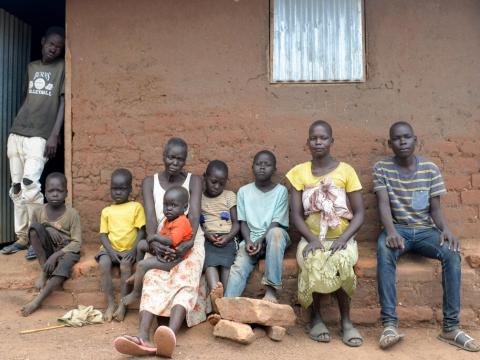Lending to refugees: How impossible becomes possible

Martina challenges the finance sector to think again about how risky refugees are when it comes to loaning them money.
Over the past decade, the sheer number of refugees and internally displaced populations (IDPs) has been continuously rising, and, at the end of 2020, it hit a staggering 80 million people.1 Also, crises have become longer and protracted, leading to a longer duration of displacement for the populations and lessened the likelihood of people returning to their homes. These are deeply worrying trends.
The livelihood activities and financial needs vary between displaced communities, with one big factor being the length of stay in a country. As this duration increases, access to financial support plays an all-important role in enabling populations to progress from dependence to self-reliance.
This means that actors in the financial inclusion space must ask themselves the question: Can we offer financial services (savings, loans, insurance, remittances) to displaced populations? Let’s look at two opposing views:
"No, we cannot lend to refugees. It is too difficult."
For formal financial institutions, offering IDPs or refugees financing is seen as just too risky. There are too many barriers: external factors like unclear or unhelpful national policies around identity documentation and what can be done with it (i.e., open a bank account, get a driver’s license); the difficulty in IDPs accessing services; and the challenges of geographical distance, to name a few.
From a financial institution’s perspective, in addition to the high administrative costs of serving this segment that is perceived as ‘risky,’ the available products may not meet client needs. The loan sizes may be too high, and potential clients may not be able to meet collateral requirements. We prefer:
"Sure, we can lend to refugees. Let’s innovate."
With digital innovations, courage, and a lot of donor support*, VisionFund was able to pilot two products specifically designed for refugees in two very difficult contexts, responding to two very different client needs.
In Uganda, with a fully automated process for client registration and the use of mobile money for transactions, the Saving Group Linkage Loan extends microcredit into already formed Savings Groups. Currently, VisionFund Uganda serves over 17,200 clients in 700 savings groups from host and refugee communities, with a loan portfolio in excess of $400,000 and a remarkable repayment rate of about 96% per month.
76% of these clients are women and more than 50,000 children have positively benefitted across the West Nile region. Additionally, VisionFund Uganda invested a lot in financial literacy to equip the refugees with basic financial knowledge including record-keeping, financial management, managing their loan repayment and entrenching the culture of savings. This, in addition to VisionFund’s Recovery Lending for Resilience initiatives.
Even during the pandemic, with COVID-19 restrictions in place between March and August 2020 in Uganda, the Saving Group Linkage product had the highest repayment rate compared to other loan products.
Another example of serving refugees is from Peru. As of mid-2020 the number of Venezuelans that had fled their country was at over 4.5 million. Credivision, VisionFund’s microfinance institution in Peru, teamed up with World Vision to implement a USAID-funded pilot to provide microfinance services to migrant Venezuelan refugee populations who are health professionals – allowing them to obtain clearance to practice in Peru.
An initial study conducted by World Vision International and USAID to determine the capacity of migrant populations to receive and manage financial services revealed that:
- 94% of those surveyed have higher university qualifications and 50% have pay slips that could be used as proof of income.
- 69% did not practice their profession in Peru despite having higher education, and 76% did not have their professional titles revalidated in Peru.
- 81% of applicants have the documents necessary for the revalidation of professional qualifications.
- 73% have proof of having a residence for over 1 year, and about 2.27% have proof of having a residence for 3 years.
The subsequent microfinance pilot project allowed Venezuelan medical professionals like doctors, nurses, dentists and technical staff to obtain financial support to afford validation for their qualifications in order to enter the professional labour market in Peru. In the three months the project has been active 15 individuals have been supported with loans worth USD 12,850.
So, it is possible to offer financial services to refugees and IDPs, despite the challenges that can face our industry when doing so. Men and women from places like Venezuela and South Sudan go from productive members of society to homeless and jobless in an instant—because of conflict, threat of danger, lack of food, or work. Being brave enough to innovate and offer them a financial steppingstone is not just the human thing to do, it also makes good financial sense.
*With particular thanks to Abi Trust, Austrian Development Agency, Grameen Credit Agricole, Swedish SIDA, UNHCR, Financial Sector Deepening, DFID
Learn more about World Vision's sister organisation VisionFund International here
Martina Crailsheim is the Director for Saving Group Linkage at VisionFund International